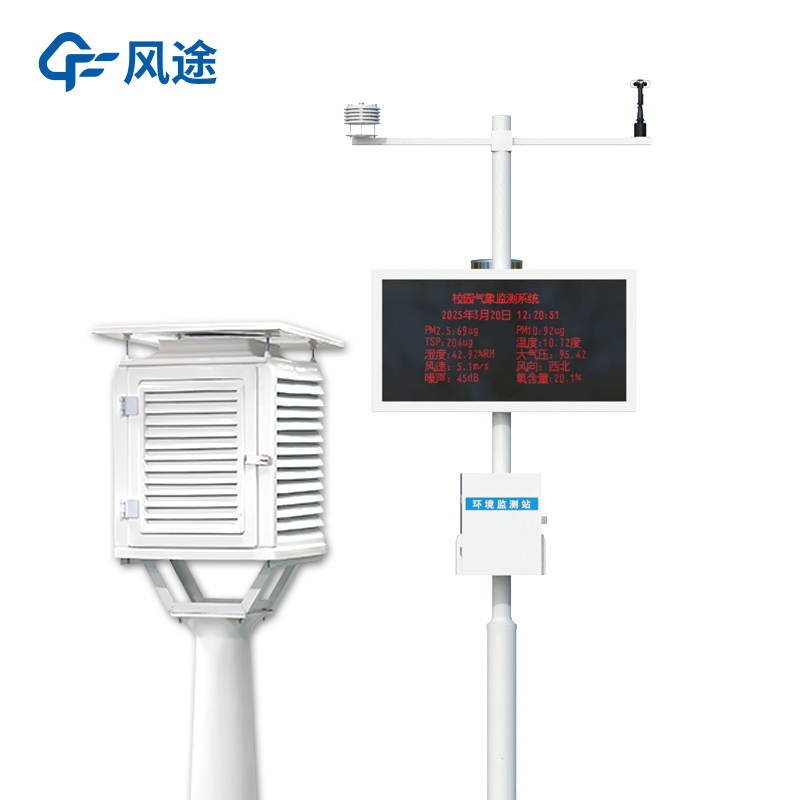Tianqiong Sensor IOT Technology Co., Ltd
Sales Manager:Ms. Emily Wang
Cel,Whatsapp,Wechat:+86 15898932201
Email:info@fengtutec.com
Add:No. 155 Optoelectronic Industry Accelerator, Gaoxin District, Weifang, Shandong, China

Sales Manager:Ms. Emily Wang
Cel,Whatsapp,Wechat:+86 15898932201
Email:info@fengtutec.com
Add:No. 155 Optoelectronic Industry Accelerator, Gaoxin District, Weifang, Shandong, China
time:2025-09-25 09:02:19 source:Weather Station viewed:171 time
A School Weather Station is a comprehensive device established on campus that can automatically, continuously, and in real-time observe and record various meteorological elements. Composed of sensors, data loggers, power supply systems, communication modules, and data display platforms (such as campus webpages or electronic displays), it is an important component of modern "smart campus" and "digital campus" construction.
The construction of School Weather Stations is not an impulsive decision but responds to multiple needs in educational development, technology popularization, and campus management.
Modern education increasingly emphasizes interdisciplinary integration of Science, Technology, Engineering, and Mathematics (STEM). A School Weather Station serves as an excellent STEM education platform. Through personal observation, recording, and analysis of real meteorological data, students can connect theoretical knowledge with the real world, fostering scientific inquiry abilities and data analysis skills.
Furthermore, with the development of Internet of Things (IoT) technology and sensor technology, the cost of meteorological monitoring equipment has significantly decreased, while reliability and automation have improved. This enables universities and even primary and secondary schools to establish and maintain a stable, fully automated weather station.
Modern weather stations can transmit data to cloud servers in real-time via wireless networks (such as 4G/3G). Schools can easily display this data on campus websites, mobile apps, or electronic screens in teaching buildings, achieving instant data sharing and visualization, which greatly enhances information accessibility and interactivity.
For teaching, it serves as a living laboratory that stimulates students' interest in science and cultivates practical abilities and innovative thinking.
For students, it acts as a window to explore the world, making learning vivid and interesting while enhancing environmental responsibility.
For schools, it represents a calling card of a smart campus, enhancing the school's technological image and providing a scientific basis for management decisions.
For society, it functions as a base for science popularization, and the accumulated long-term data also provides valuable supplements for local meteorological research.

The Handheld Weather Station is a portable meteorological observation instrument that integrates multiple meteorological element monitoring functions, and the FT-SQ5A is a typical representative of it. It uses precise sensors and intelligent chips, and can accurately measure five meteorological elem...
ambient weather station handheld is a pocket-sized, multi-functional device specifically designed for emergency response. It can quickly and accurately acquire core meteorological data such as temperature, humidity, atmospheric pressure, wind speed, and wind direction, and integrates emergency functions such as SOS distress signals and navigation. Adaptable to harsh environments, it features a high-capacity battery and low power consumption design, ensuring continuous operation for extended periods....
Gridization is a technical means that divides the geographical space into several regular or irregular grid units. Through independent monitoring, analysis, and management of each grid, it achieves refined management of the entire region. In the field of environmental monitoring, grid-based manageme...
Faced with numerous types of anemometers on the market, how can one select a product that meets their own needs? First, let's understand the common types of anemometers.Mechanical AnemometerAmong mechanical anemometers, the cup anemometer is relatively common. It relies on the rotation of cups u...